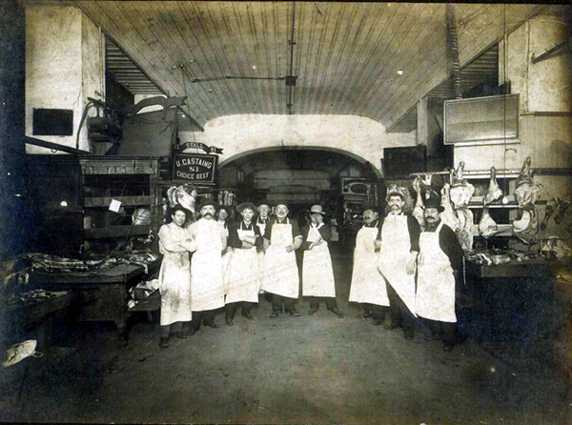
The meat section of the French Market, ca. 1905. In the photograph Romain Dartois, a French native who lived in New Orleans for eighteen years prior to his death in 1911, poses in his stall with a number of his fellow butchers.
[The Vieux Carre's] straight but narrow streets intersected at right angles and read like a roll call of Gallic nobility and
Catholic sainthood--Chartres, Burgundy, Royale, Conte, Conde, St. Pierre, Ste. Ann. There could be no doubt that this
was a French town. In the center of the plot, opening to the river, the Place d'Armes, or city square, fronted on the
imposing mass of the cathedral, flanked by the Cabildo (city hall) on one side and the Presbytere (courthouse) on the
other. The whole life of the city more or less converged here. Hard by, abutting the central quadrangle along the levee to
the front, the old market swarmed with bedizened slaves out for the day's purchasing, haggling with the equally black
overseers of stalls loaded with meat, fish, fowl and vegetables of the neighborhood. Ranged along either side of the
square, cramped and murky dry-goods stores shared the view of the parade grounds with even more numerous grog
shops and tippling places, for then even more than now the city bulged with centers of cheer.